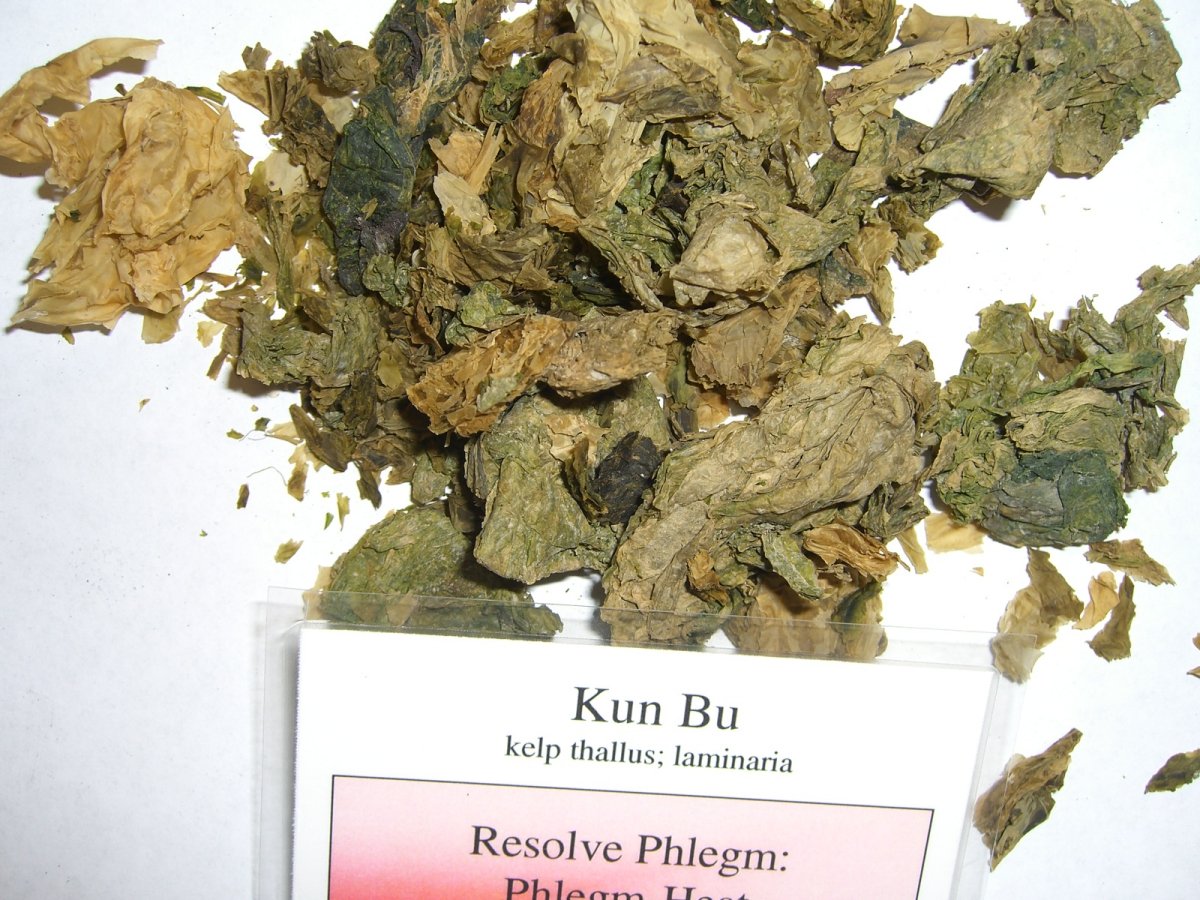Kun Bu

  | Kun Bu in TCM:Explore the properties of Kun Bu according to Chinese
Nutrition and Traditional Chinese Medicine (TCM):
Factoids:
English Name: laminaria japonica, kelp, tangle
Pharmacuetical Name: Thallus Lamniariae seu Eckloniae
Properties: salty, cold
Temperature: cold
Channels: KD, LV
Flavors: salty
Special Properties:
resolves water accumulations, resolves phlegm
Actions / Indications:
- Dissolves phlegm; softens hardness (goiter or scrofula,
various nodules on neck, swelling pain of testicles, hernia)
- Promotes urination; reduces edema (mild function
to treat dysuria and help with edema, leg qi - combine with other herbs)
Special Notes:
- Combine with Hai Zao to treat obesity, arteriosclerosis,
and hyperlipidemia
- Often paired with hai zao, Kun Bu is very similar but is stronger than Hai Zao.
-
Norwegian kelp (Bladderwrack, Fucus vesiculosus) is a different species of brown seaweed, and while it may share similar properties, it is not typically the specific kelp referred to as Kun Bu in TCM. The primary species used in TCM under the name Kun Bu is usually Laminaria japonica, though some references may sometimes include other types of kelp or seaweed.
Contraindications:
- (cc: cold due to SP and ST deficiency)
Disclaimer: In accordance with our terms of service, by using this web site you agree that none of the information found on this web site constitutes medical advice. You should always consult your doctor before trying any particular food or herbal remedy to treat disease.
Folk remedies presented on this site are designed to address specifc TCM diagnoses, and are not one-size-fits-all. If you would like to learn more about Traditional Chinese Medicine (TCM) and how it relates to Chinese Nutrition, you can book in a free call with a licensed professional. There is no obligation to purchase.
[CLICK HERE for your free INITIAL CONSULTATION] |

